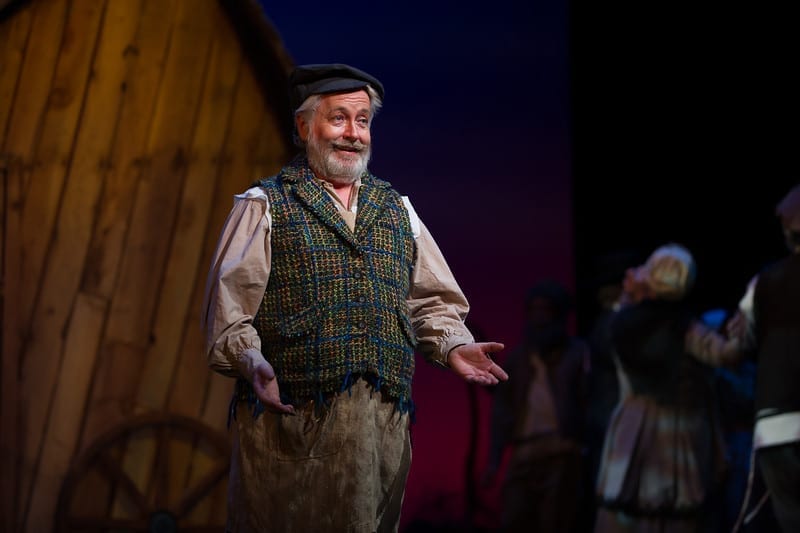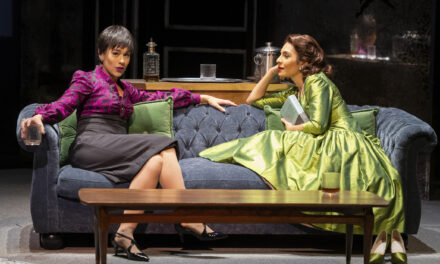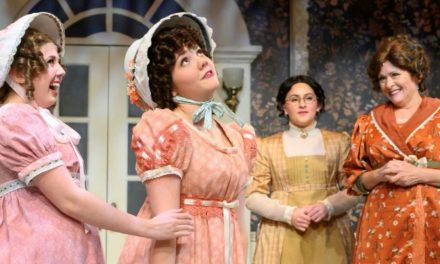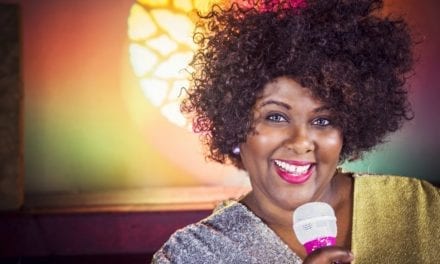LOGAN — Fiddler on the Roof, that old musical theatre favorite, written by Joseph Stein with music by Jerry Bock and lyrics by Sheldon Harnick, has been making a tremendous resurgence in Utah recently. The current production, staged by the Utah Festival Opera & Musical Theatre company in Logan, Utah, is a solid show with excellent production values, and if the standing ovation from the sold out opening night audience is anything to go by, it should please almost everyone who goes to see it this summer.
Starring the ubiquitous Michael Ballam as Tevye the milkman in the small fictional Russian village called Anatevka in 1905, Fiddler on the Roof follows Tevye’s family as they navigate their lives in a barely tolerated Jewish community among the larger population of czarist Russia. Tevye, his wife, and his five daughters scratch out a meager existence, made endurable by holding on to their traditions and their faith, as embodied by the Fiddler (Darren Sagawa). But their world is changing faster than is comfortable for many of them, and when they are eventually forced to move on, Tevye poignantly brings the Fiddler with him as he embarks into the next phase of his life in a new country.
Overall this was a very pleasant, professional quality production. Ballam is first and foremost an opera singer, which comes across clearly in his songs. It was a little strange to hear a Tevye singing beautifully operatic notes rather than the more gruff character voice often associated with the interpretation by Topol or Zero Mostel, but it seems petty to complain that the leading man has “too trained” a voice. And if audience members can get past Tevye as a blonde, blue-eyed, Nordic looking Jew, Ballam turns in a solid performance. The fact that he is Logan’s favorite son won’t hurt the show’s popularity, either.
The musical score of Fiddler on the Roof is rife with a wealth of beautiful, poignant, and beloved songs, and as a show that is produced by an Opera Company, it’s not surprising that the vocal quality of the cast as a whole is a defining feature. Indeed, principal vocal coach K. Bruce Ford and chorus master Stephen Carey did a beautiful job with the cast. Both leads and ensemble members produced a lovely rich sound that filled the Ellen Eccles theater and made me want to sing along to the familiar strains. Some individual noteworthy performances were from Stefan Espinosa as the timid tailor Motel in his song “Miracle of Miracles” (although the staging was boring, the singing was lovely) and Scott Reardon as the angry student revolutionary Perchik. Reardon sang “Now I Have Everything” with rich warm tones, although his Hodel (Olivia Ballam Blair) has a much brighter vocal quality that unfortunately sounded somewhat shrill next to him. Lazar Wolf (played by Richard Zuch) is another obvious classically trained vocalist, with a booming voice that was showcased well in “To Life.”
Director Margaret L. Harrer has faithfully reproduced the original Broadway staging and choreography by Jerome Robbins, and really, you could do much worse than stick to a master like Robbins. The group numbers were the strongest and most visually interesting, with continually moving patterns and stage pictures and lines of people to keep the action flowing. The Russian dancers in “To Life” were fantastic and energetic and exciting to watch. The bottle dancers at the wedding were impressive, and the wedding dance with the villagers was able to mostly keep my interest during a sequence that I typically feel should be shortened. Even the Chavaleh choreography was sweet and simple and told the story of the daughter’s courtships well. The blocking during the solos and duets was less successful, often falling stagnant and uninteresting. It just felt as if Harrer could have given her actors more to do during the smaller numbers. There were some moments that worked well, including the scene between Fyedka and Chava in the tailor’s shop, and the scene with Motel and Tzeitel and Tevye when Motel takes his future and his fear in his hands and dares to ask Tevye for permission to marry Tzeitel.
The set design by Dennis Hassan was one of my favorite aspects of this production. The large set pieces were stylized and angular in shape, whose walls opened outward to show the inside of the various buildings (Tevye’s home, the bar, Motel the tailor’s shop), and spinning easily to move the action back “outside.” The lighting design by Christopher Wood used lots of saturated colors to create gorgeous backgrounds for the action onstage. The costumes by Patti Johnson were equally colorful, with many hues and patterns mixed and matched to create somewhat Technicolor peasants. I didn’t love the overall effect, especially because the five daughters looked a little bit like a rainbow with each assigned their own specific color, but for the most part it wasn’t too distracting. The Jewish community was clearly defined from the Russians who occasionally threaded their way through the village, and the papas, sons, mamas, and daughters were easy to tell apart.
Looking back at my notes of the evening, there is clearly much to praise about Utah Festival Opera’s Fiddler on the Roof. So I wonder why I was left with slight feeling of ennui as I exited the theater. Perhaps it is simply a surfeit of “Fiddlers” of late? Overall this is a good, solid, well done performance of an enduring classic. The production values are excellent, the talent is good, and it has everything to appeal to its intended audience. There is nothing ground breaking about it, but that’s not what UFO set out to do. Instead, they wanted to create a very nice show. Fiddler on the Roof will have an excellent run in Logan, and please its audience no end. In fact, the pre-show announcer let it be known that the entire run is almost completely sold out already, so get tickets quickly if you have a hankering to see this show.











